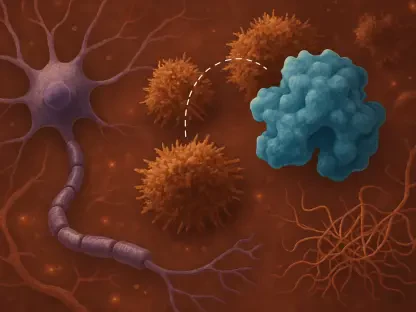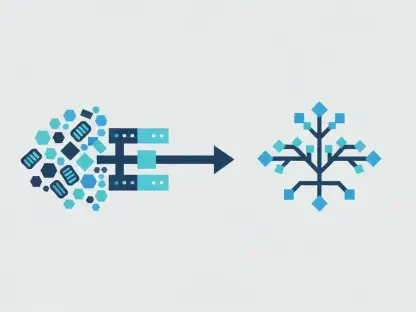In a monumental stride toward understanding and addressing ultra-rare genetic disorders, a research team at Tel Aviv University’s Gray Faculty of Medical and Health Sciences has pioneered a groundbreaking model. This endeavor focuses on replicating a perilous condition tied to a mutation in the GRIN2D gene, affecting merely 40 individuals worldwide. Characterized by severe developmental epilepsy alongside notable motor and cognitive delays, this disorder has remained a challenge due to its rarity and complexity. By employing genetically engineered mice, the research aims to unravel the intricacies of this genetic anomaly, potentially opening new avenues for effective treatments. This model stands as a beacon of hope for those few families grappling with this rare condition, promising advancements in patient care and disease management. It marks a significant leap forward, presenting both a scientific challenge and a pathway to possible therapeutic breakthroughs.
The Genetic Disorder’s Unique Challenges
A rare genetic disorder induced by a GRIN2D gene mutation challenges medical science, affecting just a handful of individuals globally. The symptoms, including developmental epilepsy, motor, and cognitive delays, often lead to early mortality, underscoring the pressing need for effective treatment strategies. The disorder’s severe manifestations and the limited number of human cases complicate traditional approaches to study and treatment, necessitating a more innovative and personalized research strategy. Professors Moran Rubinstein and Karen Avraham spearhead efforts to decode the disorder’s complex mechanisms and explore new therapeutic possibilities, marking a dedicated pursuit of scientific understanding.
The personal connection between the researchers and an affected family, particularly that of an Israeli boy named Adam, serves as a vital driving force for this initiative. This bond enriches the research with a genuine commitment, as Adam’s interaction with the team began when he was just two years old, catalyzing a comprehensive long-term study. The researchers’ direct engagement with this family not only fuels their determination but also enhances the emotional depth of their scientific inquiry. Such personal ties illustrate the profound human element present in scientific research, especially when tackling ultra-rare disorders that significantly impact affected families.
The Development of a Viable Mouse Model
The initial phase of the research centered on acquiring an in-depth understanding of the disorder, prompting the team to develop a mouse model bearing a mutation akin to that found in human patients. Initially, these mice experienced severe symptoms and high early mortality rates, posing a notable obstacle for experimental research. This affirmed the model’s genetic accuracy but highlighted its impracticality for sustained study due to the mice’s rapid decline. Addressing this challenge required meticulous refinement through state-of-the-art genetic engineering techniques, resulting in a more stable genetic model for further analyses.
Restructuring the model led to the development of a mouse strain capable of transmitting the mutation without immediately presenting symptoms, allowing for a practical approach to research. This adjustment made it feasible to breed both healthy and affected mice, with the latter exhibiting symptoms mirroring those of human patients, such as neurological disorders like epilepsy, hyperactivity, and significant motor impairments. Cognitive impairments surfaced more prominently as the mice matured, reinforcing the understanding that this disorder progresses over time. This refined model presents a more robust framework for studying the disorder, enhancing the ability to test potential treatments effectively.
Stages of Disease Progression and Therapeutic Insights
The research focused on assessing the afflicted mice across four pivotal developmental stages: two weeks, three weeks, four weeks, and five weeks old. These time points approximate various human childhood phases, offering a detailed timeline of disease progression. The findings revealed that most affected mice did not survive to sexual maturity, often succumbing to severe seizures. This in-depth timeline underscores the profound impact of the disorder while highlighting its rapid and debilitating progression, providing crucial insights into the condition’s trajectory in a more controlled environment than human studies.
In an additional research segment, the emphasis shifted to neuronal communication, particularly in the cerebellum, which is vital for motor control. Pathological changes were observed as early as two weeks old, evidenced by diminished neuronal activity. Although some neuronal functions normalized with age, communication defects and structural changes persisted, offering a window into the underlying mechanisms of the disorder. These findings may inform future therapeutic approaches, emphasizing the cerebellum as a potential target for intervention. Furthermore, the research validates the model using electroencephalography (EEG) tests, revealing a continuous pattern of disruptive brain activity unique to this disorder.
Evaluating Potential Treatments
Upon validating the model, the research advanced towards assessing how various medications affect symptom progression. In an unexpected discovery, the use of ketamine, a previously considered treatment option, was found to worsen seizures, challenging earlier assumptions. Conversely, memantine, an existing treatment for the disorder, demonstrated potential in improving specific aspects of brain function. This drug, along with phenytoin, an anti-seizure medication, exhibited promising partial improvements in brain activity, presenting potential avenues for alleviating symptoms.
Collaboration across institutions is a hallmark of this study, with contributions from Dana-Dwek Children’s Hospital and Columbia University, enhancing its multidisciplinary approach. These partnerships underscore the collaborative nature of tackling rare disorders, drawing on a vast pool of knowledge and expertise to advance research. The model’s success in spotlighting memantine’s seizure prevention capabilities underscores its utility in bridging the research-clinical practice gap, providing vital insights for clinicians managing treatment options in patients with rare conditions.
Future Directions and Implications
Clinical applications of this research are profound, particularly in guiding treatment strategies for patients with rare genetic disorders that lack comprehensive clinical data. Prof. Hausman-Kedem highlights the mouse model’s instrumental role in refining clinical decision-making, facilitating the transition toward personalized medicine. Despite the limited number of human cases, insights into drug efficacy and safety, drawn from the model, enable nuanced therapeutic approaches. The positive indicators of memantine’s potential efficacy exemplify this model’s practical contributions, hinting at improving patient outcomes through tailored interventions.
Future research, as outlined by Prof. Rubinstein, delves into evaluating additional treatments, including pharmacological and genetic interventions. Preliminary results offer optimistic prospects of enhancing cognition, motor function, and lifespan among affected mice. As these investigations progress, they promise to further unravel the disorder’s complexity, potentially pioneering new treatment paradigms. Importantly, this research spotlights the importance of addressing rare diseases through innovative models, setting the stage for broader applications in other rare neurological disorders with similar underlying mechanisms.
Bridging Scientific Inquiry and Human Impact
A rare genetic disorder arising from a mutation in the GRIN2D gene presents significant challenges in the medical field, impacting only a handful of people worldwide. This disorder manifests through developmental epilepsy, along with motor and cognitive delays, often leading to premature mortality. These severe symptoms highlight the urgent need for effective treatment avenues. However, the rarity and intensity of the disorder complicate conventional research and treatment methodologies, prompting a shift towards innovative and personalized strategies. Professors Moran Rubinstein and Karen Avraham lead efforts to unravel the disorder’s intricate mechanics and seek new therapeutic approaches, illustrating a dedicated pursuit of scientific comprehension.
A personal connection with an affected family, particularly an Israeli boy named Adam, propels this initiative. This relationship began when Adam was merely two, initiating a comprehensive long-term study. Their engagement deepens their resolve and enriches the emotional nuance of their research. Such personal ties underscore the profound human aspect in scientific pursuits, especially in addressing ultra-rare conditions affecting families significantly.









